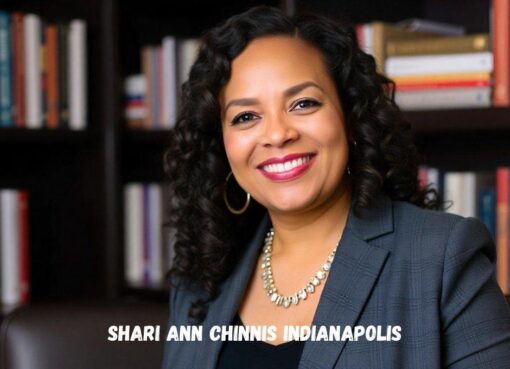Understanding Seattle ZIP Code: A Comprehensive Guide

Introduction
Seattle, known for its lush landscapes, thriving tech scene, and rich cultural heritage, is a city that spans a diverse range of neighborhoods, each with its own unique identity. One critical aspect of navigating this vibrant city is understanding Seattle ZIP Code system. ZIP codes are not just numbers; they represent distinct communities, serve vital logistical functions, and even influence real estate trends. This article will delve into the complexities of Seattle ZIP code, exploring their history, significance, and how they shape the city’s character.
The History of ZIP Codes in Seattle
ZIP codes, or Zone Improvement Plan codes, were introduced by the United States Postal Service (USPS) in 1963 to improve the efficiency of mail delivery. Seattle was among the cities that adopted this system, assigning unique codes to its various neighborhoods. Originally, the purpose of ZIP codes was purely functional—facilitating mail sorting and delivery. However, as cities evolved, these codes began to carry additional meanings, representing demographic shifts, economic disparities, and cultural identities.
Early Development
Seattle ZIP code have changed over the decades, reflecting the city’s growth and transformation. The first set of codes was established in the early 1960s, with the downtown area designated as 98101. As the city expanded, new codes were created, accommodating the burgeoning suburbs and increasing population density.
The Impact of Technology

In recent years, the advent of technology and data analytics has transformed how ZIP codes are perceived and utilized. Real estate websites, demographic studies, and marketing firms often analyze ZIP code data to provide insights into neighborhood characteristics, trends, and even property values. As a result, understanding ZIP codes has become crucial for anyone looking to buy a home, start a business, or simply understand the local culture.
Breakdown of Seattle ZIP Code

Seattle is home to several ZIP codes, each corresponding to different neighborhoods. Understanding these ZIP codes can help residents and newcomers alike appreciate the diversity of the city. Below is a breakdown of some of the key ZIP codes in Seattle and the neighborhoods they encompass:
98101 – Downtown Seattle
The heart of the city, 98101, covers downtown Seattle. This area is a bustling hub of activity, home to major corporations, cultural institutions, and a vibrant nightlife scene. Notable landmarks include the Space Needle, Pike Place Market, and the Seattle Art Museum. The presence of numerous high-rise buildings and luxury apartments makes 98101 one of the most sought-after Seattle ZIP Code in the city.
98102 – Capitol Hill and Eastlake
This ZIP code encompasses Capitol Hill, one of Seattle’s most iconic neighborhoods known for its lively arts scene, nightlife, and LGBTQ+ community. Eastlake, a charming waterfront area, also falls under 98102. With a mix of historic homes and modern developments, this neighborhood attracts a diverse population, including young professionals and families.
98103 – Ballard and Green Lake
The 98103 ZIP code includes Ballard, a former fishing community turned trendy neighborhood, and Green Lake, known for its scenic park and recreational opportunities. Ballard is famous for its Nordic heritage, breweries, and thriving farmer’s market, while Green Lake is a popular destination for outdoor enthusiasts, offering a picturesque lake surrounded by walking paths and greenery.
98104 – International District and Pioneer Square
Encompassing the historic Pioneer Square and the vibrant International District, 98104 is a culturally rich area of Seattle. Pioneer Square is known for its stunning Romanesque architecture and art galleries, while the International District celebrates the city’s Asian heritage through restaurants, markets, and festivals. This ZIP code is a focal point for cultural diversity and community engagement.
98105 – University District
The University District, or U District, falls within the 98105 ZIP code. Home to the University of Washington, this area boasts a youthful atmosphere, with plenty of coffee shops, bookstores, and eateries catering to students and faculty. The neighborhood is also known for its eclectic mix of architecture, from historic homes to modern apartments.
98106 – West Seattle
West Seattle is covered by the 98106 ZIP code, known for its stunning views of downtown and the Puget Sound. This area features a mix of residential neighborhoods and commercial districts, including the popular Alki Beach, where residents and visitors alike enjoy beach activities, waterfront dining, and picturesque sunsets.
98107 – Ballard and North Beach
Another ZIP code associated with Ballard, 98107, extends to the North Beach area. This code includes a variety of residential options, from single-family homes to modern condos. The area is also known for its parks, including Golden Gardens Park, which offers beach access and trails for outdoor recreation.
98108 – South Seattle
Covering neighborhoods such as Rainier Valley and Beacon Hill, the 98108 ZIP code is known for its cultural diversity and community spirit. Rainier Valley, in particular, is one of the most ethnically diverse neighborhoods in Seattle, featuring a wide range of international restaurants, shops, and cultural events.
98109 – South Lake Union
The 98109 ZIP code encompasses South Lake Union, an area that has undergone significant development in recent years. Known as a tech hub, South Lake Union is home to major companies, including Amazon. The area features modern apartments, a vibrant waterfront, and numerous parks, making it an attractive location for professionals and families alike.
98112 – Madison Park and Capitol Hill
The 98112 ZIP code includes the upscale neighborhoods of Madison Park and parts of Capitol Hill. Known for its beautiful homes and proximity to Lake Washington, this area is popular among affluent residents seeking a tranquil environment with easy access to the city’s amenities.
98115 – North Seattle
The 98115 ZIP code covers North Seattle neighborhoods like Maple Leaf, Pinehurst, and parts of the University District. Known for its family-friendly atmosphere and access to parks, this area offers a mix of residential options and community resources, making it appealing for families and individuals alike.
The Importance of ZIP Codes in Real Estate

ZIP codes play a crucial role in the real estate market, influencing property values, rental rates, and investment opportunities. Here’s how:
Property Values and Market Trends
Real estate professionals often use ZIP codes to analyze market trends and property values. Areas with desirable ZIP codes typically command higher prices due to factors like location, amenities, and school districts. For instance, neighborhoods like Capitol Hill and Ballard have seen significant appreciation in property values, driven by their popularity among young professionals and families.
Rental Markets
For renters, understanding ZIP codes can help identify areas that fit their budget and lifestyle. Certain Seattle ZIP Code may have higher rental rates due to proximity to downtown, access to public transportation, or local attractions. In contrast, neighborhoods further from the city center may offer more affordable options, appealing to families or individuals seeking quieter surroundings.
Investment Opportunities
Real estate investors often analyze ZIP code data to identify promising neighborhoods for investment. Areas undergoing revitalization or gentrification may present opportunities for future appreciation, while neighborhoods with strong rental demand can offer steady cash flow. Understanding the dynamics of specific ZIP codes is essential for making informed investment decisions.
Community and Cultural Identity
Seattle ZIP Code are not merely geographic identifiers; they reflect the cultural and community dynamics within the city. Each neighborhood has its unique character, shaped by the people who live there and their shared experiences. Here’s how ZIP codes contribute to community identity:
Neighborhood Events and Festivals
Many neighborhoods within Seattle ZIP Code host annual events and festivals that celebrate local culture, cuisine, and heritage. For example, the Capitol Hill Pride Festival showcases the LGBTQ+ community, while the Ballard Seafood Festival highlights the area’s maritime history. These events foster a sense of belonging and pride among residents.
Local Businesses and Economy
ZIP codes often correlate with the concentration of local businesses, which play a vital role in shaping community identity. Independent restaurants, shops, and services contribute to the character of neighborhoods, fostering a unique sense of place. Supporting local businesses strengthens community ties and enhances the overall quality of life.
Advocacy and Community Engagement
Understanding ZIP codes can also empower residents to engage in local advocacy efforts. Neighborhood associations and community groups often organize initiatives to address local issues, from urban development to environmental concerns. Being aware of one’s ZIP code can help residents participate in discussions that impact their community.
Conclusion
Seattle ZIP Code serve as more than just postal designations; they encapsulate the city’s rich tapestry of neighborhoods, cultures, and identities. Each code represents a unique community with its own character, values, and opportunities. As the city continues to grow and evolve, understanding the significance of these ZIP codes becomes increasingly important for residents, newcomers, and investors alike.
Whether navigating the real estate market, exploring local culture, or participating in community events, the insights gained from Seattle ZIP Code can enhance one’s experience of this dynamic city. As residents and visitors alike continue to engage with the various neighborhoods, the vibrant spirit of Seattle will undoubtedly thrive, reflecting the diverse and interconnected lives of those who call this remarkable city home. Understanding Seattle ZIP Code is just the beginning of discovering all that Seattle has to offer, inviting everyone to explore its neighborhoods, connect with its communities, and appreciate the unique stories that shape this beautiful city.



Leave a Comment